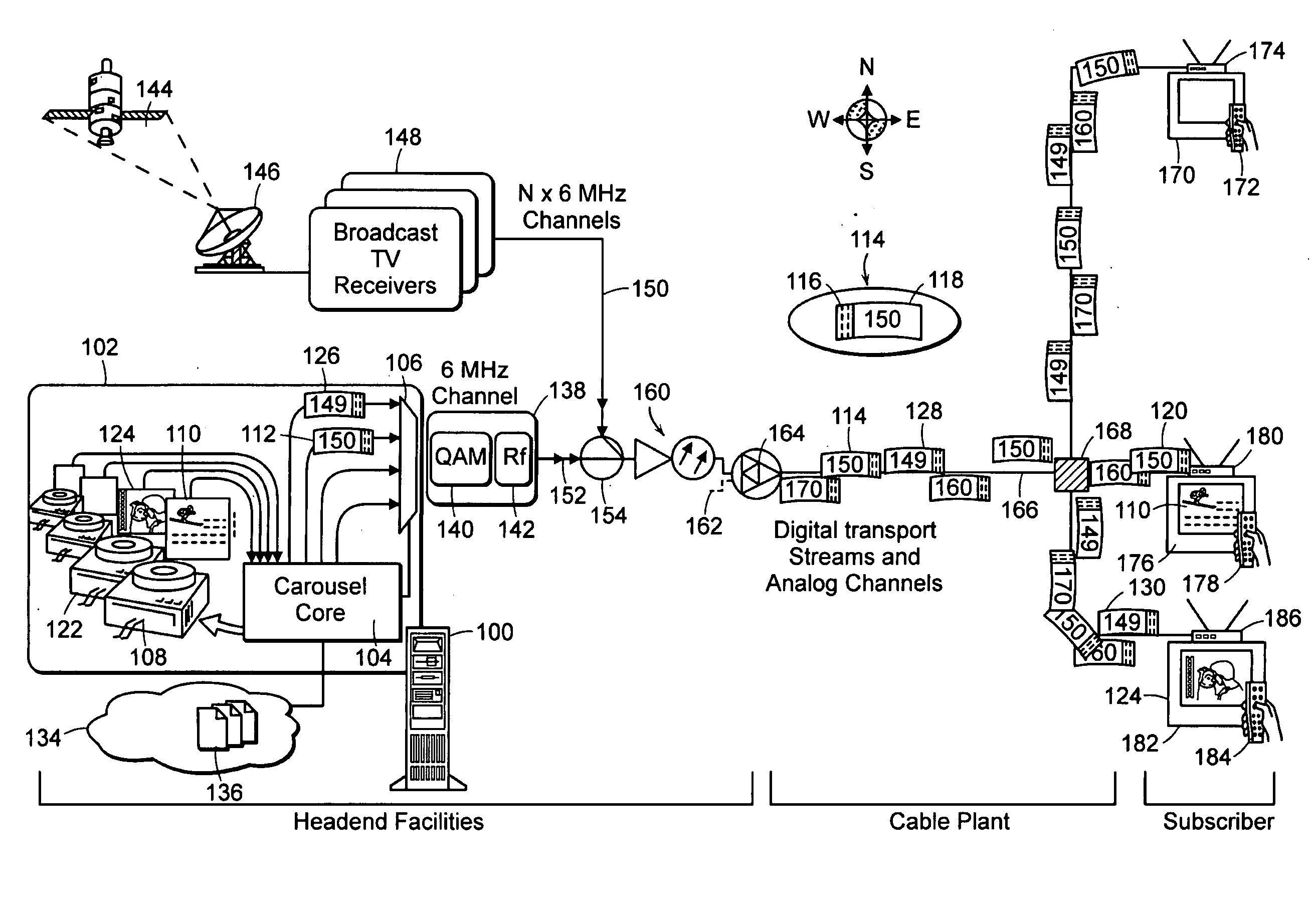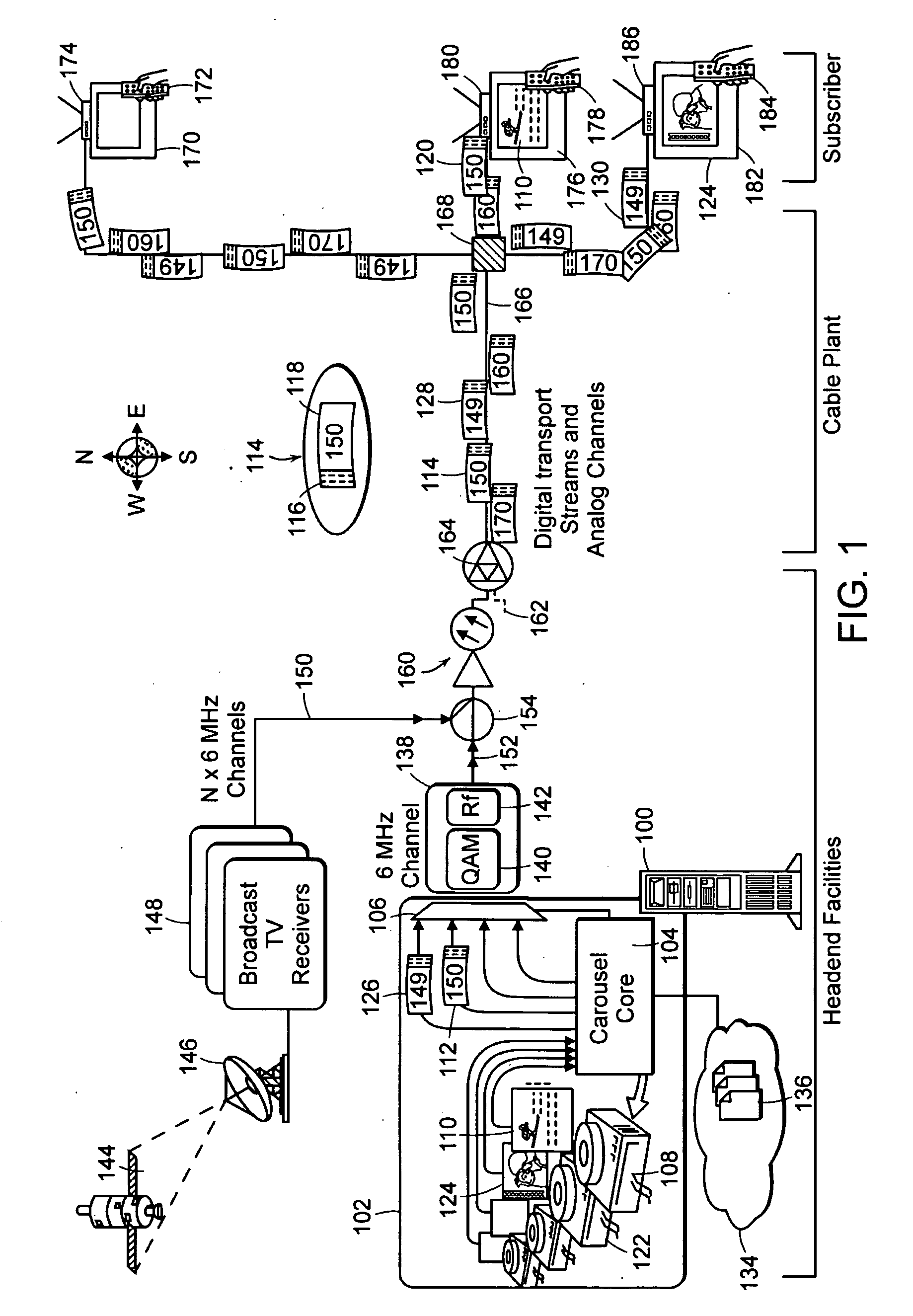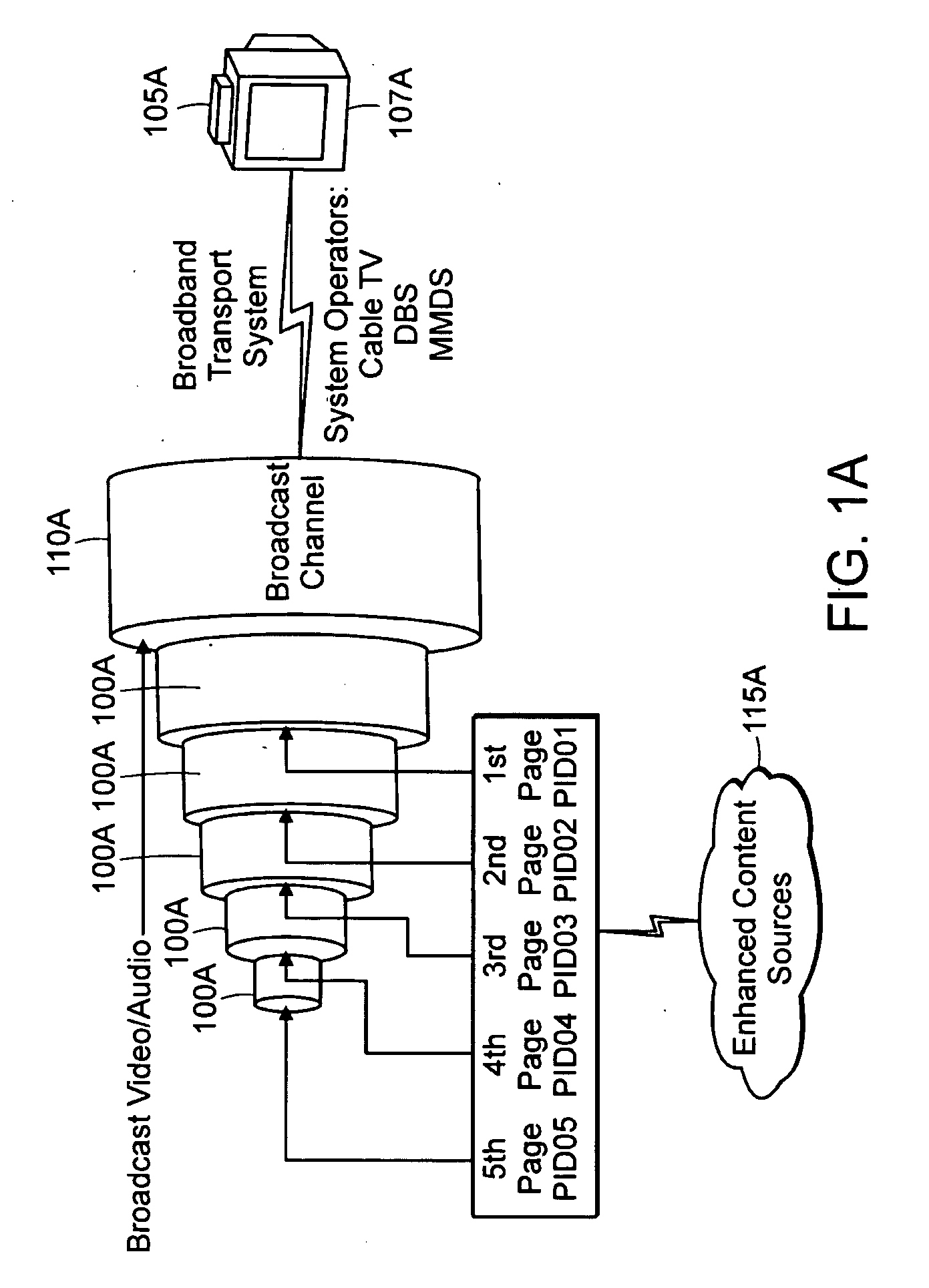Method for Bandwidth Regulation on a Cable Television System Channel
a technology of cable television system and channel, which is applied in the field of digital headend content distribution system, can solve the problems of insufficient total bandwidth and the inability of cable television system to achieve the promise of 500 channel tv set, and achieve the effects of low cost, low bandwidth, and quick provisioning and configuration
- Summary
- Abstract
- Description
- Claims
- Application Information
AI Technical Summary
Benefits of technology
Problems solved by technology
Method used
Image
Examples
Embodiment Construction
[0026]The term “information content” shall refer to data that is displayable on a display device, such as, but not limited to web pages, and video content. The term “digital transport stream” refers to digital data that is transmitted from a head end to a set-top box for decoding and display. The digital transport stream may contain static content that is non-dynamic data, such as images or HTML pages that is broadcast either continually or periodically. Displayable data need not be included in the transmitted digital transport stream at all times.
[0027]The present invention provides a method and apparatus for providing low bandwidth and low cost content to cable television subscribers. The apparatus involves an inexpensive web content server which can be integrated with existing cable headends and which can deliver up to 50 discrete digital channels on a single 6 MHz bandwidth slot. The web content server includes an administrative tool which allows quick provisioning and configuri...
PUM
 Login to View More
Login to View More Abstract
Description
Claims
Application Information
 Login to View More
Login to View More - R&D
- Intellectual Property
- Life Sciences
- Materials
- Tech Scout
- Unparalleled Data Quality
- Higher Quality Content
- 60% Fewer Hallucinations
Browse by: Latest US Patents, China's latest patents, Technical Efficacy Thesaurus, Application Domain, Technology Topic, Popular Technical Reports.
© 2025 PatSnap. All rights reserved.Legal|Privacy policy|Modern Slavery Act Transparency Statement|Sitemap|About US| Contact US: help@patsnap.com



